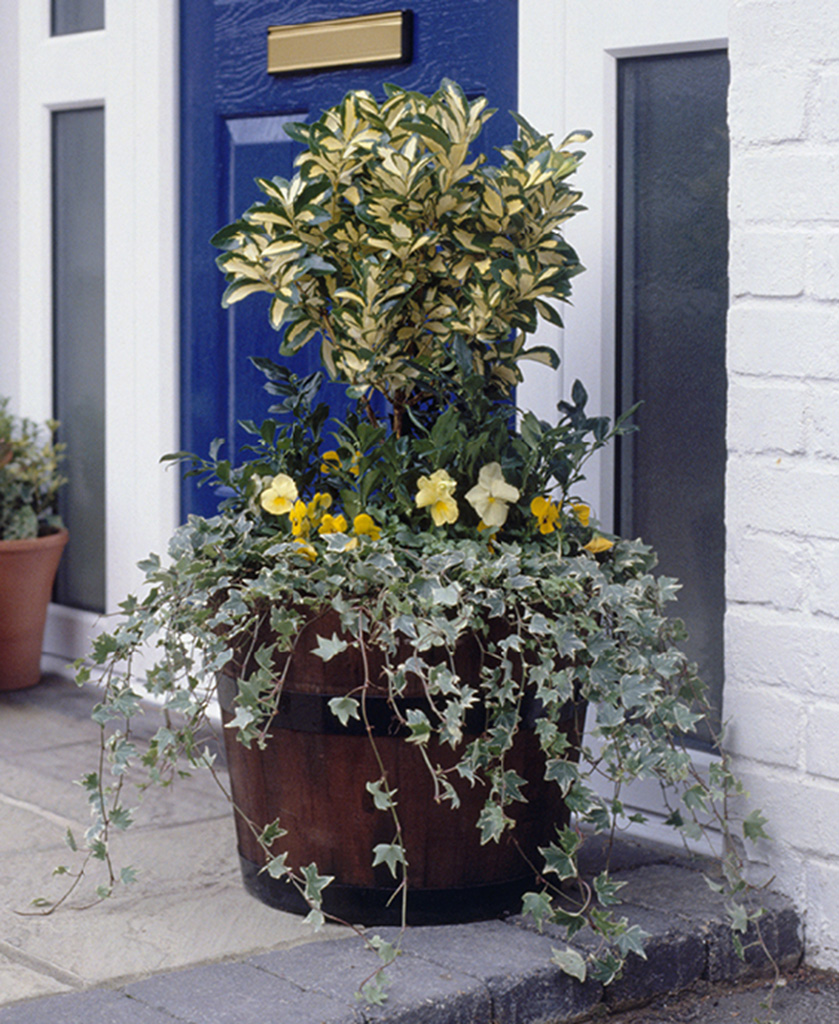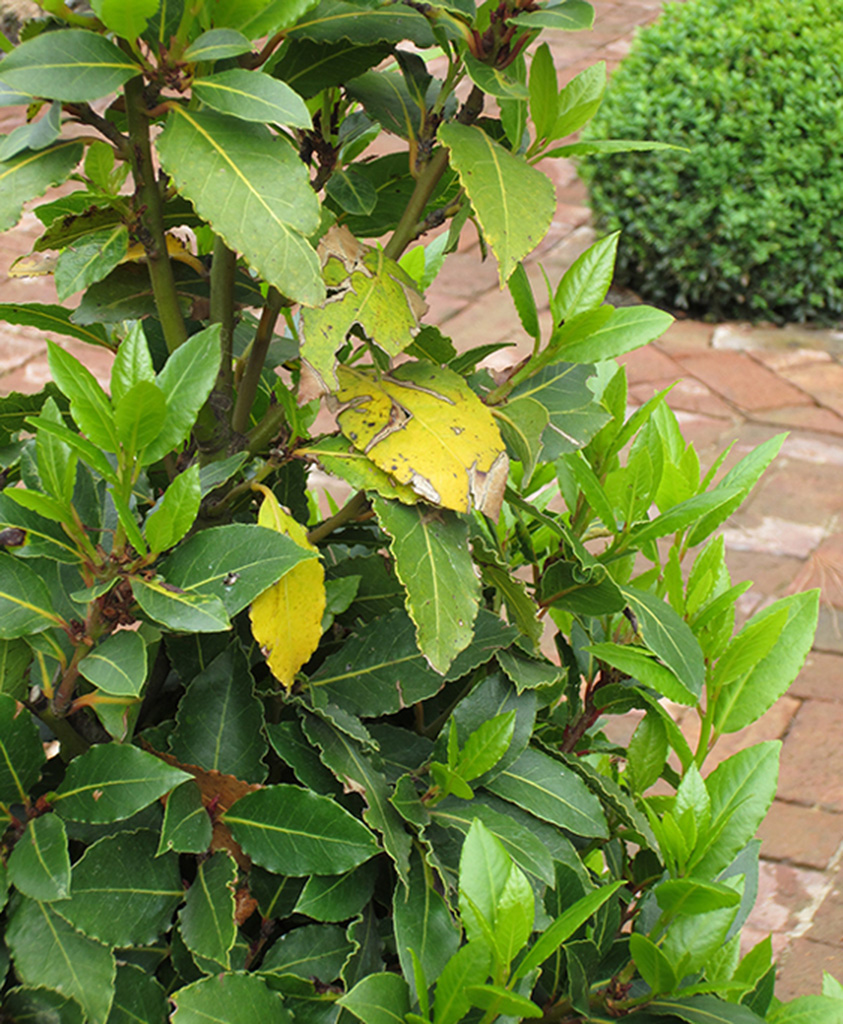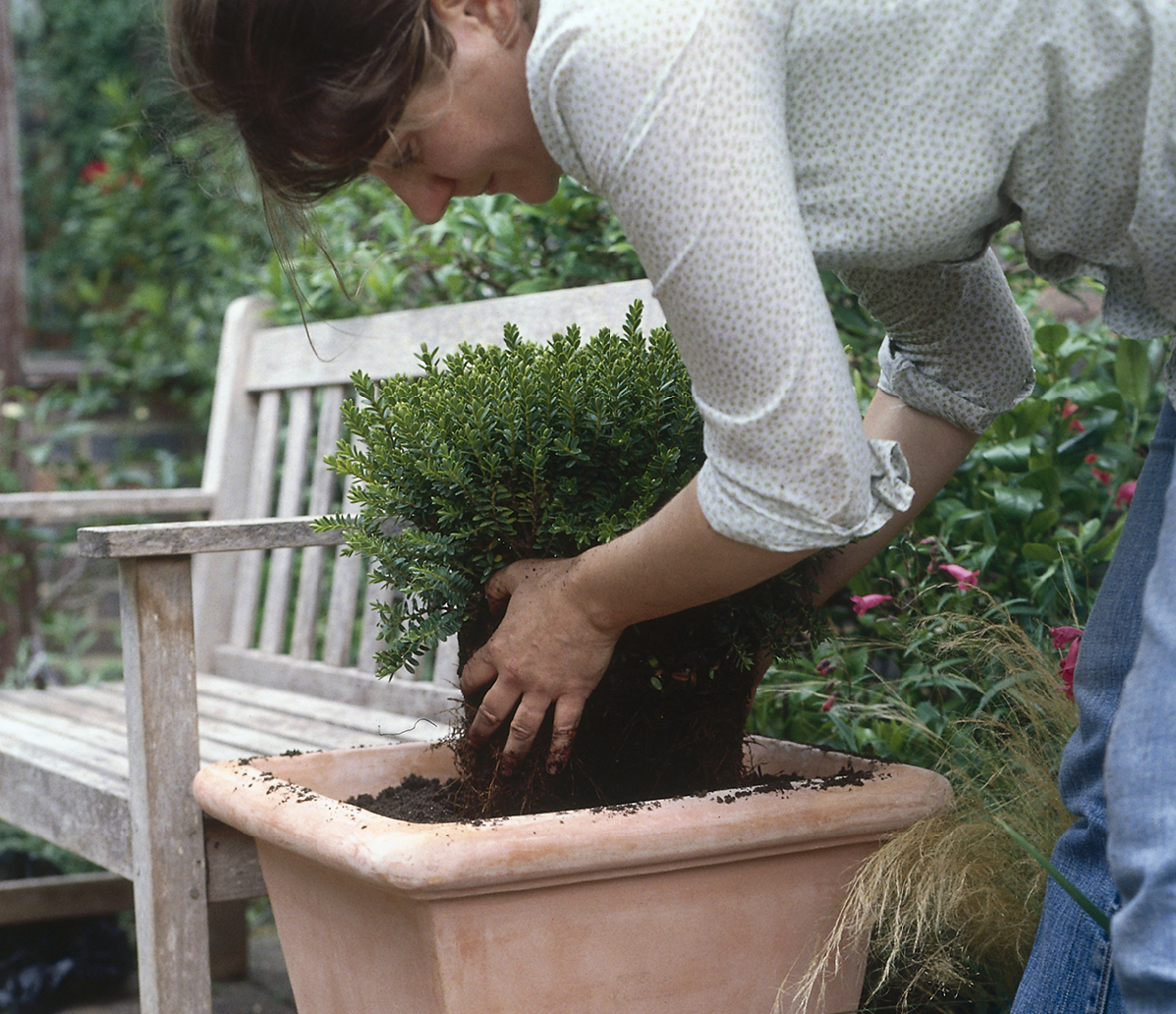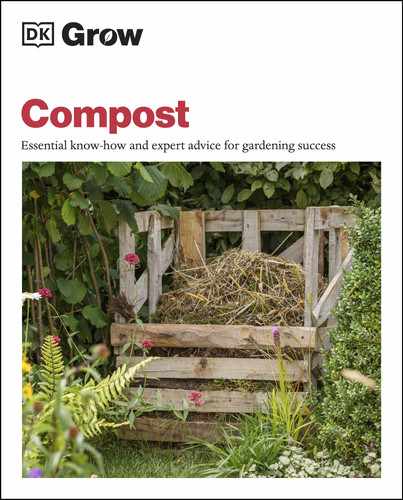REPOTTING SHRUBS
Large woody plants can remain in their pots for some years, but they will eventually outgrow their living quarters and need repotting. When planting a shrub, choose a container that either has straight sides or is wider at the top than the bottom. This will ensure that the root ball is easy to remove when the time comes to transfer the plant to a larger pot—you may have to break vessels that have smaller necks than bases to extract the roots.

Plant shrubs in containers with a wider top than the base, such as this half-barrel, to make repotting easier.
TIME TO MOVE
Shrubs and small trees in decorative containers make beautiful focal points on a patio or balcony, but after a few years they may start to show signs of poor growth. This is often because the roots have filled the pot and become congested, which means that they will not be able to take up water or nutrients easily. If this is the case, the top of the potting mix in your container will be a solid mat of roots and the leaves may turn yellow and fall off. The plant’s susceptibility to pests and diseases can increase, too.

Yellow leaves and poor growth are signs that a shrub may have outgrown its pot.
CHOOSING A POTTING MIX
Before you move your shrub, make up an appropriate potting mix for its new container, which should be one or two sizes larger than the original pot. Most shrubs will thrive in a 50:50 mix of homemade compost and garden soil, but those that like free-draining conditions such as lavender and bay trees (Laurus nobilis) will prefer a grittier mix of one part soil, one part homemade compost or leaf mold, and one part fine gravel. Make up enough to half-fill the new pot you have chosen, which should fill it once the plant is added.

Hebes require a gritty potting mix to ensure there is good drainage around the plant’s roots.
REPLANTING SHRUBS
Give your plants a long drink before repotting, and let the water percolate down into the root ball—this may take a while when the roots are congested. Slide an old bread knife around the edge of the root ball to loosen it from the sides and tip the pot on its side on to a soft surface such as a lawn, so that you do not scratch the container. You will probably need someone to hold the pot while you slide the plant out.
Add a layer of your potting mix to the bottom of the new container, checking that once the shrub is planted the base of its stem will be about 2in (5cm) below the rim, which will allow sufficient space for water to collect before it seeps into the soil. Use a hose to wash off some of the old compost from the root ball, then carefully tease out the roots, which will be tightly encircling the central ball. Trim off any that look black or diseased, then place the plant in the container and fill in around it with fresh potting mix. Shake the shrub gently to settle the potting mix around the roots. After watering, add a 1in (2.5cm) mulch of homemade compost or leaf mold over the surface of the potting mix, leaving a gap around the shrub’s stems.

Take care to protect your back by bending your knees and asking a friend to hold the pot before pulling out the plant.

Wash off some of the compost around the roots and then gently tease out those encircling the root ball with your fingers.

Use homemade potting mix to fill in around the roots of the replanted shrub before adding a compost mulch on top.
Compost Planting Projects | REPOTTING SHRUBS
NEED TO KNOW
- Water your plant regularly. Give it plenty of water each time rather than delivering it in short bursts, so that it penetrates down to the roots instead of encouraging them up to the surface where they will dry out.
- Keep your repotted shrub out of direct sunshine and drying winds for a few weeks until you see new leaves or stems start to grow.
- Top up the mulch of homemade potting mix or leaf mold each year in spring.
Compost Planting Projects | REPOTTING SHRUBS
KEEPING PLANTS COMPACT
Instead of repotting, you can trim the roots of your shrub and replace it in its original container. This method will help to keep large shrubs more compact and is good option if you do not have space for a larger pot. Follow the advice for repotting above, but once you have extracted the plant from its container use a clean, sharp pair of pruners to remove up to a third of the roots. Cut through some of the thicker roots, which stabilize the plant, but retain as many of the fine roots as possible—these smaller roots draw up the most water and nutrients. Then plant up the root-trimmed shrub as described above.

Trim the roots with sharp pruners to keep your shrub compact.
